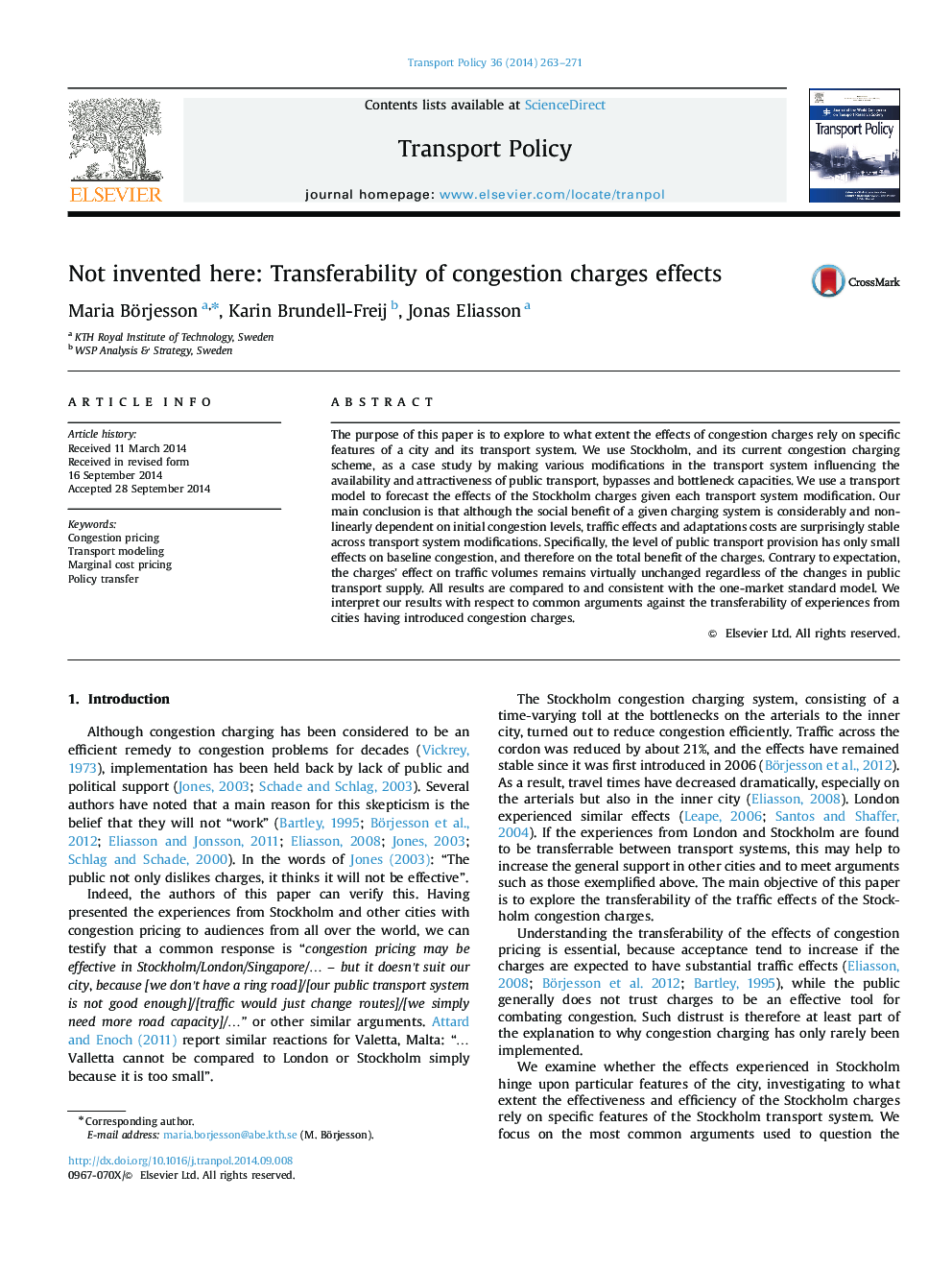| Article ID | Journal | Published Year | Pages | File Type |
|---|---|---|---|---|
| 7497855 | Transport Policy | 2014 | 9 Pages |
Abstract
The purpose of this paper is to explore to what extent the effects of congestion charges rely on specific features of a city and its transport system. We use Stockholm, and its current congestion charging scheme, as a case study by making various modifications in the transport system influencing the availability and attractiveness of public transport, bypasses and bottleneck capacities. We use a transport model to forecast the effects of the Stockholm charges given each transport system modification. Our main conclusion is that although the social benefit of a given charging system is considerably and non-linearly dependent on initial congestion levels, traffic effects and adaptations costs are surprisingly stable across transport system modifications. Specifically, the level of public transport provision has only small effects on baseline congestion, and therefore on the total benefit of the charges. Contrary to expectation, the charges' effect on traffic volumes remains virtually unchanged regardless of the changes in public transport supply. All results are compared to and consistent with the one-market standard model. We interpret our results with respect to common arguments against the transferability of experiences from cities having introduced congestion charges.
Related Topics
Social Sciences and Humanities
Social Sciences
Geography, Planning and Development
Authors
Maria Börjesson, Karin Brundell-Freij, Jonas Eliasson,
